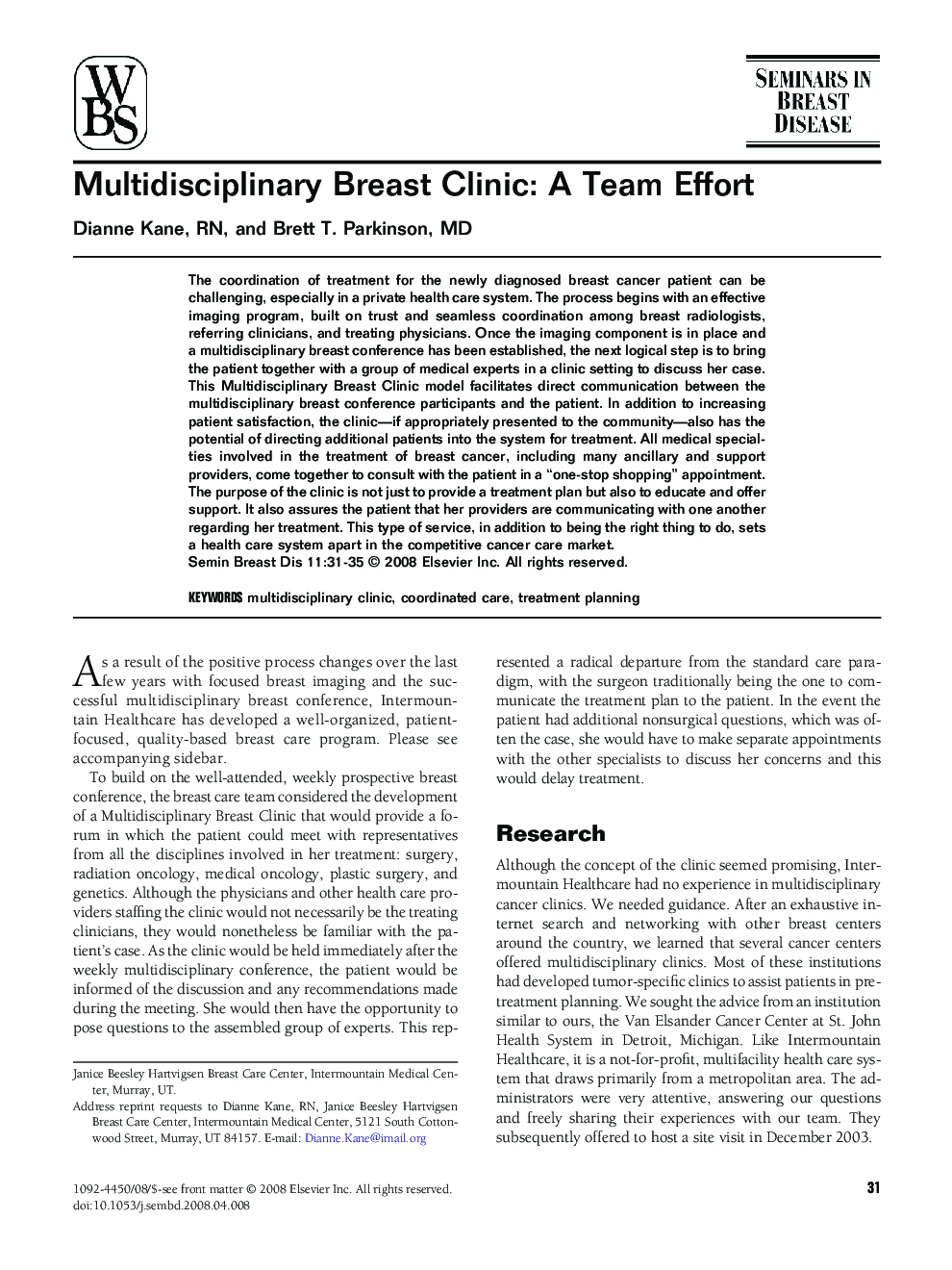| Article ID | Journal | Published Year | Pages | File Type |
|---|---|---|---|---|
| 3997454 | Seminars in Breast Disease | 2008 | 5 Pages |
Abstract
The coordination of treatment for the newly diagnosed breast cancer patient can be challenging, especially in a private health care system. The process begins with an effective imaging program, built on trust and seamless coordination among breast radiologists, referring clinicians, and treating physicians. Once the imaging component is in place and a multidisciplinary breast conference has been established, the next logical step is to bring the patient together with a group of medical experts in a clinic setting to discuss her case. This Multidisciplinary Breast Clinic model facilitates direct communication between the multidisciplinary breast conference participants and the patient. In addition to increasing patient satisfaction, the clinic-if appropriately presented to the community-also has the potential of directing additional patients into the system for treatment. All medical specialties involved in the treatment of breast cancer, including many ancillary and support providers, come together to consult with the patient in a “one-stop shopping” appointment. The purpose of the clinic is not just to provide a treatment plan but also to educate and offer support. It also assures the patient that her providers are communicating with one another regarding her treatment. This type of service, in addition to being the right thing to do, sets a health care system apart in the competitive cancer care market.
Related Topics
Health Sciences
Medicine and Dentistry
Oncology
Authors
Dianne RN, Brett T. MD,
